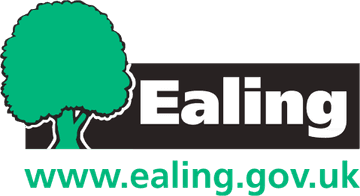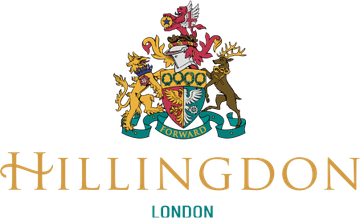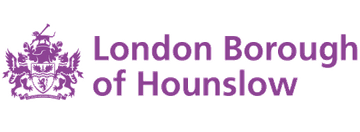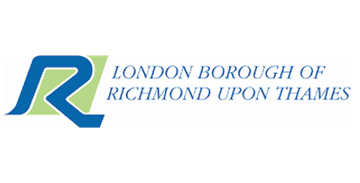FAQs
West London Waste Authority is a statutory authority that deals with the disposal of waste (rubbish) for the boroughs of Brent, Ealing, Harrow, Hounslow, Hillingdon and Richmond upon Thames. Our area covers approximately 38,000 hectares and includes 1.7 million residents. We also deal with food waste & green waste as well as managing a Household Reuse and Recycling Centre located in Brent.
Whilst our primary job is waste disposal, we encourage our 1.7 million residents to Reduce, Reuse & Recycle as much as they can. Our dedicated Waste Minimisation team works throughout our six boroughs on resident engagement and projects to reduce waste production and increase recycling rates. Focusing on specific waste materials, our team works with each council to help increase their recycling rates by raising awareness and creating engaging campaigns.
The rubbish collected throughout our 6 boroughs is taken to either our Victoria Road (Ruislip) or Transport Avenue (Brentford) transfer stations. Once here, it is compacted and goes by train to our state of the art (energy recovery) plant in Severnside where west London’s waste is used as a renewable energy source.
All 30,000 tonnes of food waste collected across West London passes through Veolia Alperton, Southall lane depot and Transport Avenue, Brentford. It is then transported to Bio Collectors facility in Mitcham, London. Food waste is then anaerobically digested by micro-organisms to produce biogas and agriculture fertiliser in a sealed system. The majority of the food waste collection vehicles actually run biogas. The biogas is converted into electricity and heat using a combined heat and power (CHP) engine that feeds back to the National Grid. The bio-fertiliser is then distributed to local farms to grow crops.
Using open windrows, a total average of 44,000 tonnes of garden waste is collected and processed into accredited soil conditioner each year across West London. 24,000 tonnes goes West London Composting while the remaining 20,000 tonnes goes to Countrystyle Recycling in Laverstock Park, Hampshire.
Due to the problems with identification and to avoid significant contamination, our advice is to compost suitable products through a home composting system or to dispose of them in the residual bin. The commercial composters including anaerobic digestion have to meet a compost quality standard test called PAS 100/110 to ensure what is produced is safe for use and distribution to land. The standard does not tolerate any plastic contamination. We encourage householders to use compostable biobags, which comply with EN 13432 certification.
Single use products marketed as compostable or biodegradable may not always comply with the EN 13432 standards, it is difficult for people to differentiate the numerous brands out there (including BioPlastics which are confusingly not necessarily Biodegradeable). If we were to accept any of these products, it would create a greater risk of contamination and confusion for our food and green waste streams. The safest outcome is to dispose of these into the rubbish bin for recovery because the other risk is that these items will be placed into recycling bins, causing contamination of plastics for recycling.
At the end of the day, a takeaway container is still a takeaway container…a single-use product, and we want to stop this wasteful behaviour. We promote actions that support the waste hierarchy and economic incentives, which encourage producer responsibility.
Compostable liners are a great alternative to plastic when using them for food waste recycling. The machinery at our plant is able to break apart the liners which helps convert the food waste into fertilizer. Alternatively, newspaper is great and environmentally friendly option to contain and line your food waste caddy.
Contrary to popular belief, the three arrow triangle you see on plastics does not necessary mean that the item is recyclable. The number that you see inside the triangle tells you the composition and type of the plastic.
1 PETE
Polyethylene terephthalate
Soft drink bottles, mineral water, fruit juice container, cooking oil
2 HDPE
High-density polyethlene
Milk jugs, cleaning agents, laundry detergents, bleaching agents, shampoo bottles, washing and shower soaps
3 PVC
Polyvinyl chloride
Trays for sweets, fruit, plastic packing (bubble foil) and food foils
4 LDPE
Low-density polyethylene
Crushed bottles, shopping bags, highly-resistant sacks and most of the wrappings
5 PP
Polyproplene
Furniture, luggage and toys
6 PS
Polystyrene
Toys, hard packing, refrigerators trays, cosmetic bags, costume jewellery, CD cases and vending cups
7 Other
Other plastics
Acrylic, polycarbonate, polyactic fibers, nylon and fiberglass
Source - https://learn.eartheasy.com/articles/plastics-by-the-numbers/
Please check with your council to see what items you can and cannot recycle.
We are championing the idea of producer responsibility across a number of different waste streams to ensure that more of these items are recycled and brought back into the producers supply chain, giving the recyclable materials value and ensuring that they are reused.
For example, we want to ensure that producers such as coca cola (who create a number of plastic bottles), take back the bottles that are recycled through the deposit return scheme and use them for producing new bottles instead of using virgin resources. By bringing these items through the supply chain, the value of recycling will increase and producers will ensure that effective recycling measures are in place to ensure that they receive the highest quality of recycled bottles.
We divert 97% of all waste collected in West London away from landfill and send it to Severnside Energy Recovery Centre (SERC) where it’s used as a valuable resource to create renewable energy. We only send waste to landfill which would not be suitable for SERC such as asbestos.
Between 1986-2013, waste collected from London Boroughs of Brent, Ealing, Harrow, Hillingdon, Hounslow and Richmond upon Thames was taken by rail to landfill sites in Sutton Courtenay, Oxfordshire and, predominately Calvert, Buckinghamshire.
Landfill was used to refill expansive holes in the ground created by quarrying. Engineering of landfills improved significantly over the period as stronger environmental protection measures were bought in and the waste management industry innovated to create energy from the methane gas being produced.





